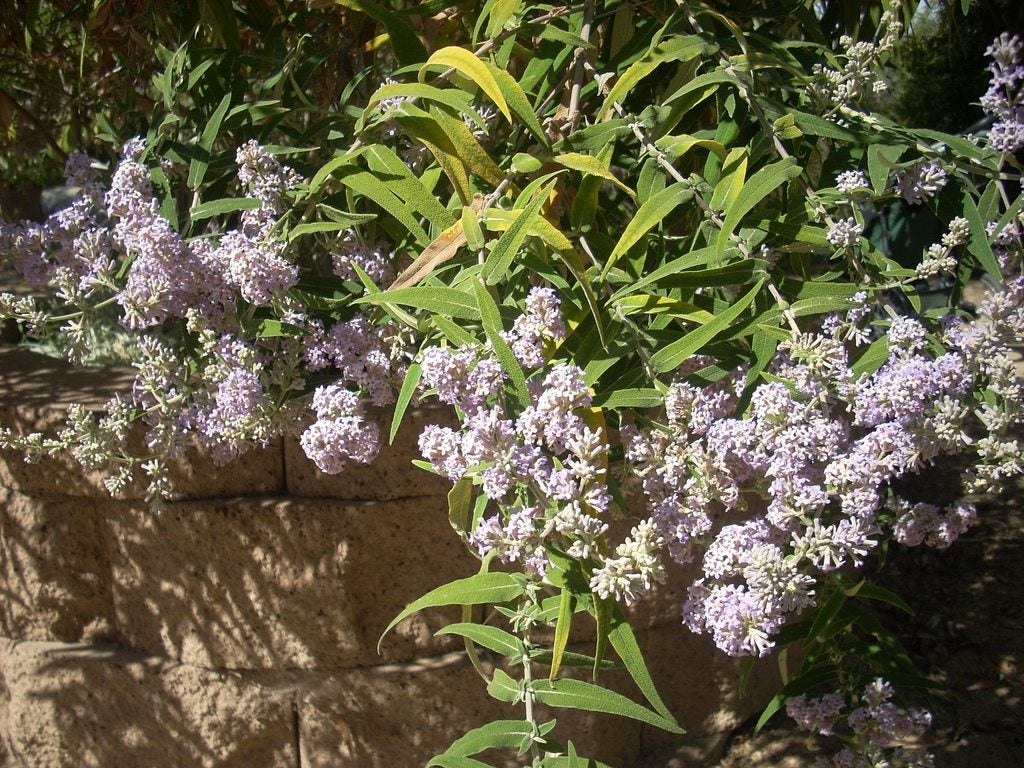Butterfly Bush Leaves Turning Yellow: How To Fix Yellowing Butterfly Bush Leaves


Butterfly bush is a common ornamental specimen, prized for its long flower spikes and ability to attract pollinators. This plant is a perennial, which dies back in fall and produces new foliage in spring. When mine defoliates in autumn, the leaves change color naturally; but during the growing season, yellow leaves on my butterfly bush can signal other problems. Cultural or insect issues are likely the cause for leaves turning yellow on butterfly bush. Here are some potential causes so you can triage your yellowing butterfly bush leaves.
Why Butterfly Bush Leaves Are Yellow
Butterfly bush is aptly named because it draws bees and butterflies but also emits a strong scent in the evening which attracts moths. This plant has beautiful 6 to 12 inch (15-31 cm.) long flower spikes but ashy green unremarkable foliage. If butterfly bush leaves are yellow, it might be due to plant stress or it might be an insect invasion. These vigorous growers are not subject to many disease or insect issues and are resilient enough that they don’t need regular babying. That being said, occasional problems do occur.
Cultural Issues for Yellowing Butterfly Bush Leaves
If you notice leaves turning yellow on butterfly bush, it’s time to investigate the possible causes. Buddleia prefers well-drained soil and full sun for best flower production. Wet roots can cause the plant to decline, and the roots may rot in overly soggy conditions. Soil pH is important to plant health and helps with uptake of nutrients. Butterfly bush should be grown in a pH of 6.0 to 7.0. If soil is overly acidic, phosphorus ions react with aluminum and iron to form less soluble compounds. That means that those micro-nutrients are not readily available to the plant. If iron availability is low, the leaves will fade to yellow, leaving intact the green veins in the foliage. When butterfly bush leaves are yellow with green veins, this is a sign of iron chlorosis and can be treated by sweetening the soil with lime and fertilizing the plant to start it on the road to recovery.
Insects and Butterfly Bush Leaves Turning Yellow
Spider mites are common pests of Buddleia, especially when the plants are stressed. Dry conditions bring on infestations of these tiny sucking insects. It is this feeding method which saps the energy of the plant and results in symptoms like leaves turning yellow on butterfly bush. There are several other sucking insects that might plague the plant, but spider mites are the most prevalent. Look for webs in among the fading leaves. This will be the clue that insects are the culprits. Buoy the health of your plant by watering it deeply and regularly, giving it a foliar feed and spraying it with horticultural soap to combat the tiny pests. Nematodes in sandy soil can also foul the health of the plant. Purchase beneficial nematodes as a solution. Avoid pesticides, as Buddleia attracts many beneficial insects that could be killed.
Additional Reasons for Yellowing Butterfly Bush Leaves
Disease is another concern when you see butterfly bush leaves turning yellow. Buddleia is a hardy, tough plant that is rarely attacked by any diseases, though they do happen. Downy mildew causes a coating to form on leaves, diminishing their effectiveness at photosynthesis and eventually causing leaf tips to fade and the entire leaf to die. It is most common when plants experience cool temperatures and extended leaf wetness. Herbicide injury from drift is another possible cause for yellowing leaves. Spraying non-selective herbicides in windy conditions will cause some of the poison to float on the air. If it contacts your butterfly bush, the infected areas will die. This is most often the leaves at the outside of the plant. If you are using a systemic herbicide, the poison will transport into the vascular system of your Buddleia and can kill it. Use caution when spraying and avoid applying in windy conditions.
Sign up for the Gardening Know How newsletter today and receive a free copy of our e-book "How to Grow Delicious Tomatoes".

Bonnie Grant is a professional landscaper with a Certification in Urban Gardening. She has been gardening and writing for 15 years. A former professional chef, she has a passion for edible landscaping.